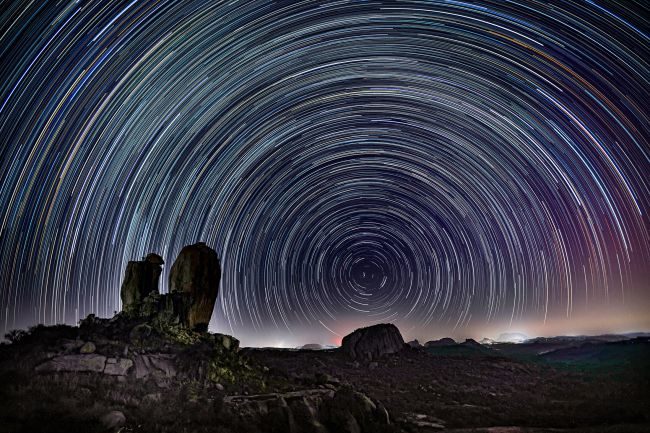
"However, as we learn more, it is becoming clear that we understand less" about Polaris, wrote the authors of a new paper on the famous star.
The problem with Polaris is that no one can agree on how big or distant it is.
Astrophysicists have a few ways to calculate the mass, age and distance of a star like Polaris. One method is a stellar evolution model, said new study co-author Hilding R. Neilson, an astrophysicist at the University of Toronto. Researchers can study the brightness, color and rate of pulsation of the star and use that data to figure out how big and bright it is and what stage of life it's in. Once those details are worked out, Neilson told Live Science, it's not hard to figure out how far away the star is; it's fairly simple math once you know how bright the star really is and how dim it looks from Earth.
These models are especially precise for cepheids, because their rate of pulsing is directly related to their luminosity, or brightness. That makes it easy to calculate the distance to any of these stars. Astronomers are so sure they understand that relationship that cepheids have become critical tools for measuring distances all across the universe.
But there are other ways to study Polaris, and those methods don't agree with the stellar evolution models.
"Polaris is what we call an astrometric binary," Neilson said, "which means you can actually see its companion going around it, sort of like a circle being drawn around Polaris. And that takes about 26 years."
Researchers haven't yet made detailed observations of a full circuit by Polaris B. But they've seen enough of the companion star in recent years to have a pretty detailed picture of what the orbit looks like. With that information, you can apply Newton's laws of gravity to measure the masses of the two stars, Neilson said. That information, combined with new Hubble Space Telescope "parallax" measurements — another way to calculate the distance to the star — lead to very precise numbers on Polaris's mass and distance. Those measurements say it's about 3.45 times the mass of the sun, give or take 0.75 solar masses.
That's way less than the mass you get from stellar evolution models, which suggest a value of about seven times the mass of the sun.
This star system is weird in other ways. Calculations of the age of Polaris B suggest that the star is much older than its bigger sibling, which is unusual for a binary system. Typically, the two stars are about the same age.
Neilson, together with Haley Blinn, an undergraduate student and researcher at the University of Toronto, generated a huge set of models of Polaris to see whether those models could reconcile all the data known about the system. They couldn't.
One possibility is that at least one of the measurements here is just wrong, the researchers wrote. Polaris is an especially difficult star to study, Neilson said. Located above Earth's North Pole, it's outside the field of view of most telescopes. And the telescopes that have the necessary equipment for precisely measuring the star's properties are usually designed to study much fainter, more distant stars. Polaris is too bright for those instruments; in fact, it's blinding for them.
But the data researchers do have seem trustworthy, and there's no obvious reason to doubt that information, Neilson said.
Those findings led Neilson and Blinn to another, stranger explanation: Perhaps the main star of the Polaris system was once two stars and they slammed together several million years ago. Such a binary collision, Neilson said, can rejuvenate stars, pulling in extra material and making the stars look like they just "went through the fountain of youth."
Stars that result from binary collisions don't neatly fit stellar evolution models, and such an event could explain the discrepancy found with Polaris.
"This would be an unlikely scenario, but not impossible," the researchers wrote.
So far, none of the solutions is wholly satisfying.
"It is challenging to draw significant conclusions beyond the fact that Polaris continues to be an enduring mystery, and the more we measure the less we seem to understand," Neilson and Blinn wrote.



Comment: See also: